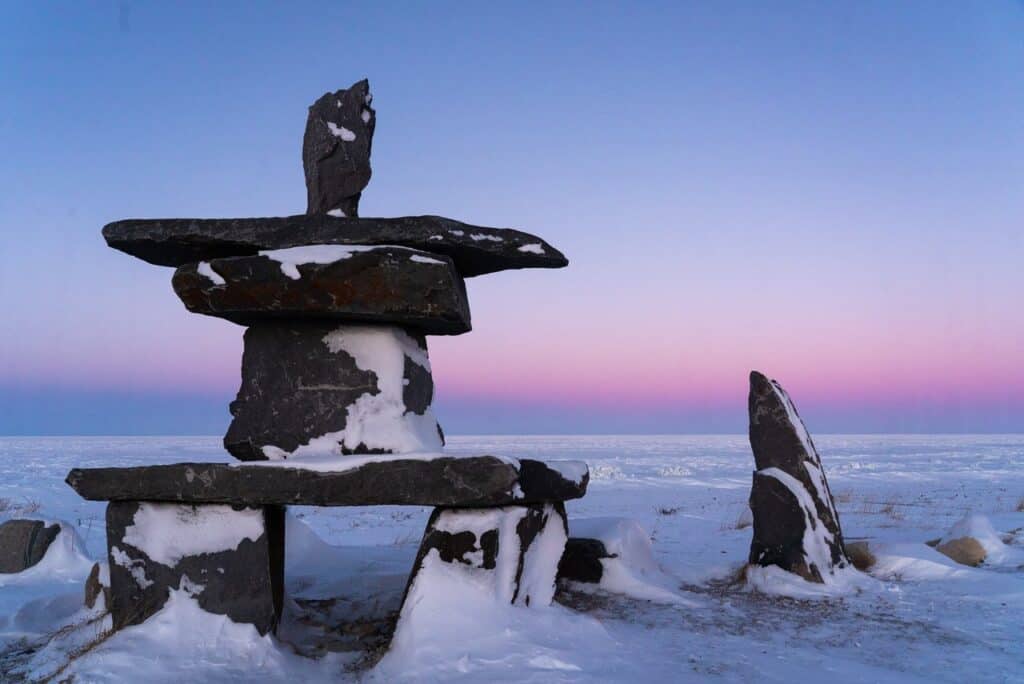The history of arctic exploration

The Arctic, a vast expanse of ice and snow, has long been a source of fascination and mystery. Its untouched beauty and the promise of undiscovered secrets have lured explorers for centuries. In this article, we’ll take a look at the rich history of Arctic exploration — from early attempts to recent adventures — and reveal how you too can become a part of northern exploration and discovery.
The Early Voyages
Arctic exploration has always been a testament to human ingenuity and adaptability. In the early days, explorers relied on rudimentary tools and methods. Wooden ships, fortified against ice, were guided by simple compasses and sextants. Dog sleds and the knowledge of indigenous peoples were invaluable for overland treks. However, these early expeditions were often fraught with danger, as limited understanding of the Arctic’s harsh conditions led to numerous tragedies.
The allure of the Arctic began as early as the 330s BC, with the Greek explorer Pytheas venturing north from Britain. However, it wasn’t until the late 1500s that the search for the Northwest Passage — a direct route from Europe to Asia through the Arctic — intensified.
- John Cabot (1497): An Italian explorer, Cabot believed he could find a shortcut to Asia by sailing west. Although he didn’t find the passage, he did discover parts of North America.
- Martin Frobisher (1576-1578): This English explorer undertook three major expeditions between 1576 and 1578. On his initial voyage, he believed he had discovered gold on Baffin Island, leading to heightened interest in subsequent expeditions. However, the supposed gold later turned out to be worthless pyrite. Despite not finding the coveted passage or striking it rich, Frobisher’s journeys were significant for their early exploration of the Arctic region and for establishing England’s claim to parts of modern-day Canada.
A Golden Age of Exploration
The 1800s saw a surge in Arctic exploration, driven by scientific curiosity, national pride, and the ever-beckoning call of the unknown.
- Sir John Franklin (1845): The Franklin Expedition, led by Sir John Franklin in 1845, is one of the most enduring mysteries of Arctic exploration. Tasked with discovering the elusive Northwest Passage, Franklin and his crew of 128 men aboard the HMS Erebus and HMS Terror vanished without a trace. The disappearance — and the reward offered for the expedition’s recovery — sparked one of the largest search operations in history. Numerous expeditions were launched to uncover their fate, but it wasn’t until the 21st century that significant clues emerged. In 2014 and 2016, the wrecks of the Erebus and Terror were respectively located, offering some answers but leaving many questions about the crew’s final days.
- Robert Peary and Matthew Henson (1909): In the early 20th century, the duo embarked on multiple expeditions to the Arctic, culminating in their most controversial claim: reaching the North Pole in 1909. Peary, an American naval officer, led the expedition, while Henson, an African American explorer, played a crucial role as his right-hand man. Henson’s skills, acquired from years of polar experience and his rapport with the Inuit, were instrumental to the expedition’s success. While Peary received much of the acclaim, Henson’s contributions have since been recognized, making him one of the first African Americans to be celebrated for his achievements in Arctic exploration.
Modern Exploration and Scientific Research
As time progressed, technology became a game-changer for Arctic exploration. Modern navigation tools, such as GPS, replaced traditional instruments, increasing accuracy and safety. Satellite imagery provided a bird’s-eye view of ice patterns and potential routes. More recently, drones and underwater autonomous vehicles have been employed to study areas previously unreachable by humans. Advanced clothing and shelter technology have also allowed explorers and scientists to withstand the Arctic’s extreme temperatures for extended periods. This evolution in technology has not only unlocked the Arctic’s mysteries, but has also facilitated critical research on climate change.
Modern Arctic expeditions have shifted the focus from mere exploration to understanding the Arctic’s ecological, geological, and climatic significance.
- Trans-Arctic Air Expeditions (1958): The first successful flight over the North Pole was achieved by American explorers Richard E. Byrd and Floyd Bennett in 1926. However, it was in 1958 that the U.S. Air Force made the first jet flight over the pole.
- The Icebreaker ‘Arktika’ (1977): This Soviet vessel became the first surface ship to reach the North Pole, marking a significant achievement in Arctic navigation.
- CATS (Circumpolar Active Layer Monitoring) Program (1990s): An international initiative to monitor the active layer and permafrost in polar regions was started in the ‘90s, providing valuable data on climate change impacts.
- The Arctic Coring Expedition (2004): An international initiative in 2004 successfully retrieved seafloor sediment cores from the Lomonosov Ridge in the central Arctic Ocean. These cores provide a climate record spanning 56 million years.
- The Tara Expeditions (2006-2008): A French initiative where the schooner Tara drifted with the Arctic ice for over a year, collecting valuable data on the Arctic ecosystem and the impact of climate change.
- MOSAiC Expedition (2019-2020): The largest Arctic expedition in history, led by the German research icebreaker Polarstern, embarked in 2019. The ship and its crew spent a year drifting through the Arctic Ocean, locked in ice, to study the Arctic climate system.
These initiatives underscore the global interest in the Arctic, not just as a frontier for exploration, but also as a critical region for understanding global climate patterns and ecological systems.
Explore the Canadian Subarctic
While the Arctic’s vastness might seem intimidating, there’s a way for you to experience its magic firsthand. Here at the Churchill Northern Studies Centre (CNSC), we offer Learning Vacations and Volunteer Expeditions that allow you to immerse yourself in the beauty and wonder of the subarctic in Churchill, Manitoba.
Why Choose CNSC?
- Hands-on experience: Dive deep into your learning, from studying the majestic auroras in person to encountering the region’s unique ecology first-hand.
- Connect with nature: Encounter polar bears in their natural habitat with our Lords of the Arctic program, witness the mesmerizing Northern Lights in our Winter Skies Learning Vacation, experience one of Canada’s premiere birding hotspots via Spring’s Wings, or marvel at the beluga whales with Belugas in the Bay or Wild Planet.
- Make a difference: Volunteer Expeditions give you a chance to contribute to ongoing research projects, making a tangible impact on the ways we understand and experience the North. Learning Vacations bring meaningful benefits, too, with proceeds funding ongoing research at CNSC.
The Arctic’s history of exploration and discovery is an account of human perseverance, insatiable curiosity, and the unending pursuit of the unknown. Now, it’s your turn to be a part of this legacy. Dive into the mysteries of the Canadian subarctic with CNSC. Explore the wonders of the Arctic today!
The Churchill Northern Studies Centre is an independent, non-profit field station working to understand and sustain the North. We provide accommodations, meals, equipment rentals, and logistical support to scientific and social researchers working on a diverse range of topics of interest in the subarctic. We also facilitate learning programs throughout the year for non-credit learning vacations, university credit courses, and youth programming.
Explore our Learning Vacations to see how you can experience the subarctic in a way that’s meaningful, personal, and unforgettable. Or, donate today to support greater understanding of — and deeper appreciation for — the natural, social, economic, and cultural environments of the North.

